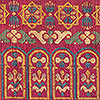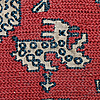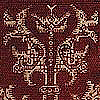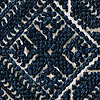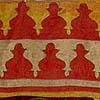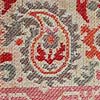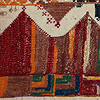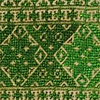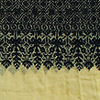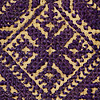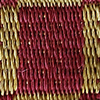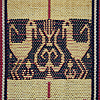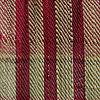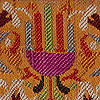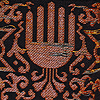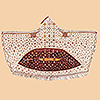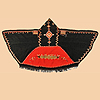
3038
SOLD
Antique Moroccan Berber Man's Hooded. made by the Ati Ouaouzguite Tribe, Atlas Mountains,
Circa 1880
Size 99" x 54"
Size 252x 133cm
Below are more Detail Images
The Moroccan Berber man’s hooded cape is made of wool and goat hair, the most spectacular male garment was a type of hooded cape usually decorated with a long elliptical design on the lower back. This design large represents the protective eye that the Berbers believe has the power to ward off the “Evil eye” The large eye design is usually woven in red or yellow on a dark brown background. The boldness of the eye motif is often combined with intricate brocade and tapestry weaving.
Picture Show Similar Pieces in Textile Museum of Canada
Wool weaving: hooded men's robes
Cities, mountains, and plains
In both town and country of Northwest Africa, hooded robes are commonly-used, traditional men's outer garments. This is a distinctive mark of the area, a symbiotic product of the climate, economy, and rich cultural history of the region. Long and generous in girth, the robe allows all kinds of activity while covering the body in accordance with Islamic tradition.
The hooded robes come in different types: some are made of coarse wool, others of the finest wool and silk. The fine robes are worn in good weather and for special occasions, while the coarser robes provide protection from the cold air of the mountains and plains.
Selham (on your right) is a semicircular cloak, woven to shape, of fine wool or silk. Usually white, it is believed to be carried over from Roman times.
Akhnif (on the wall and on the figure behind you) is worn by the Berber and Jewish populations of the High Atlas Mountains. It is woven to shape on the loom, similarly to the cloaks of Coptic Egypt. The large eye design, executed in red or yellow on a dark background of local, shiny wool, is the distinguishing feature of akhnif. It is believed to lend spiritual protection against the evil eye.
Jellaba (in the next gallery), unlike akhnif and selham, must be woven, then cut and sewn by a tailor. It is worn by boys and men all around Maghreb. Wide enough to allow unrestricted movement of the hands, it has openings that allow the arms to be freed for ablutions without removing the entire garment.
Islamic Textile History
